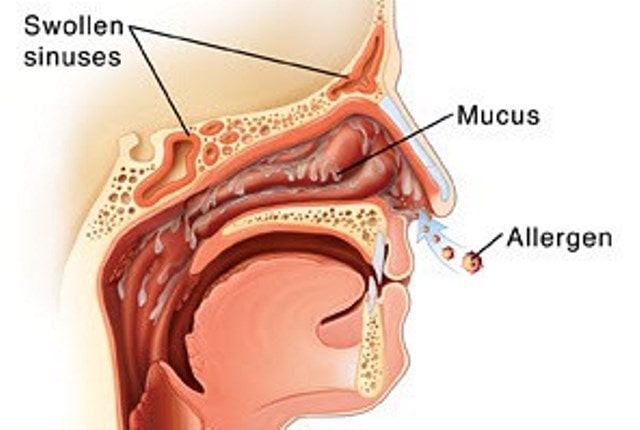What are some of the treatment options for internal scar tissue? Can internal scar tissue be removed? These are some of the commonly asked question and if any one of them sounds familiar to you, then you have landed on the right page. Read on to get a complete round up of internal scar tissue.
What Is Internal Scar Tissue
As the name suggests, an internal scar tissue is a scar tissue that has developed inside the body. An internal scar tissue can form on muscles, connective tissues, or organs.
Depending on the circumstances, you might hear internal scar tissue being referred to as an adhesion. An adhesion is a fibrous band of scar tissue that forms between tissue and organs, commonly after an injury or surgery. Adhesions often bind together tissues not normally connected.
The location of the scar tissue has significant impact on whether a scar tissue leads to medical health issue or not and, in some severe cases, surgery may be required to get rid of the scar tissue.
Whether internal or external, a scar tissue is part of the body’s natural response to injury or trauma; it is the result of the body’s attempt to heal itself.
A scar tissue is usually made of collagen but unlike the collagen in normally tissues, collagen in scar tissue is of poor quality and typically has poor supply of blood which explains why most scars don’t grow hair and are paler than the tissues surrounding them.
Internal Scar Tissue Symptoms
No internal scar tissue symptoms are usually expected unless the scar tissue has led to the development of a painful adhesion. An adhesion is in simple terms a band of scar tissue that binds together two tissues that are naturally separate. For instance, a healing scar tissue could cause an organ to bind with the abdominal cavity.
Abdominal and pelvic adhesions are frequently the problematic type and can lead to Adhesion Related Disorder which is characterized by the following symptoms:
- Chronic abdominal and pelvic pain (or on any other part of the body)
- Infertility
- Painful bowel emptying
- Pain movement and sleeping at certain positions
- Urinary bladder dysfunction
- Bowel obstruction
- Depression and other emotional disorders
- Constipation
The above symptoms can be confused for a whole lot of conditions including endometriosis, fibromyalgia, irritable bowel syndrome, chronic fatigue syndrome, anxiety, and depression.
Internal Scar Tissue Pain
Internal scar tissue pain is often associated with adhesions and is usually what brings to the attention of most patients the fact that they have such adhesions inside their body. The question though is how a usually harmless scar tissue culminates in pain.
It all begins with a scar tissue attaching itself to other organs and tissues, sometimes binding them together. In the process, nerves and nerve roots often gets tugged or pinched, creating a trigger point. In addition to pain, internal scar tissue can also belabor normal movement e.g. when they grown between ligament, leading to reduced range of motion.
Any pain associated with internal scars warrants the attention of a doctor or surgeon for proper diagnosis and treatment. Therapies such as Myofascial Release are often used to help release the pinched nerves and thus alleviate the pain.
Internal Scar Tissue Treatment – Medication
Medication is the first line of internal scar tissue treatment. They are usually used for treatment of acute cases of scar tissue pain and forms part of treatment for chronic scar tissue pain. Over the counter and prescription analgesics are usually used to alleviate the pain but cortisone injections can as well be used.
Some medications may however lead to side-effects or even not be effective in treatment of the pain associated with scar tissue which would then necessitate the use of one or more of other treatment options discussed in the next section.
How to Get Rid of Internal Scar Tissue-Internal Scar Tissue Removal
Perhaps you are right now wondering how to get rid of internal scar tissues. Well, it is usually not necessary to remove an internal scar tissue since they are usually painless and non-limiting in most cases.
But if an adhesion suddenly makes the decision to make your life a living hell ad doesn’t seem to get relief with the use of over-the-counter or prescription medication, here are other internal scar tissue removal options that may help:
Massage and Physical Therapies: Physiotherapy and massage therapies can help to release pinched nerves and alleviate the pain often associated with adhesions, especially abdominal and pelvic adhesions.
Such therapies range from Myofascial Release to Active Release Technique (ART) and Graston Technique. Your GP may be able to refer you to a good chiropractor or physiotherapist.
Acupuncture: This is an ancient medicine option that is touted to offer relief to scar tissue pain. It involves the insertion of needles into targeted area of the skin to alter the nervous system.
Acupuncture advocates say that acupuncture helps to shrink internal and external scars and reduce their effects such as energy flow impediment. But according to researchers at the New York University, there is no sufficient “…scientific evidence to indicate that acupuncture offers any benefits for scars”.
Surgery: Surgery is often used to get rid of scar tissue. There is always the risk for adhesiolysis (surgery to get rid of adhesions) to result in formation of more adhesions. As a matter of fact, 70 percent of adhesiolysis surgical procedures will result in formation of new adhesions.
Surgery is therefore spared for extreme cases, e.g. when abdominal adhesions result in bowel obstructions.
When the surgery route is chosen, laparoscopic surgery is often preferred. Also referred to as keyhole surgery, it involves making of a small incision as opposed to open surgery where large incision is usually used.
Laparoscopic surgery reduces the risk of new adhesions forming significantly and makes for a great choice for alleviation of pelvic pain and infertility. Most patients will be able to go home on the same day and resume their normal activities in one week. The only downside to laparoscopic surgery is that it is time-consuming and is technically difficult.
Depending on your specific case, the surgeon may as well decide to go the open surgery route whereby an electric current is used for removal of the scar tissue or a scalpel is used to cut the scar tissue off.
Internal Scar Tissue after Surgery
There is always the risk of getting an internal scar tissue after surgery. This is attributed to the fact that surgery typically involves making incision to tissues and organs. As the body attempts to heal itself of the remaining wounds, a scar tissue is naturally formed.
The scar tissue can then result in an adhesions – a scar tissue joining two tissue or organs that are usually separate – which can then culminate in pain (when a nerve is pinched), restricted movement, and other symptoms such as bowel obstruction, infertility, and urinary bladder dysfunction to name but a few.
As the Australia Better Health Channel reports, abdominal adhesions affect 93% of patients who have had abdominal surgery and 10 percent of people who have never undergone surgery.
Talk to your doctor or surgeon for appropriate treatment option if you experience any symptoms of scar tissue e.g. pain, after undergoing a surgical procedure.
Internal Scar Tissue Remedies – Herbs to Use
There is something about natural remedies that makes them so interesting to most people nowadays and if you are a fan of natural remedies, then you will delight to know that the herb gotu kola can help with treatment of keloid scars.
Gotu kola can be taken orally, but for external scars tissues, topical application and injection are as well possible options. Researchers at the New York University, Langone Medical Center however say that there is no enough scientific evidence to support the claim.
Using 400-800 IU of vitamin E two times per day together with 1000 mg of vitamin C can also help with the healing of scar tissue.



The article didn’t mention any prescription mediication that would work to remove scar tissue.
Hello I am a woman of 68 age. When I was 8 years old I had emergency surgery on my abdomen which left me with an 8 inch scar. I have had a few surgeries since and went to see a doctor in MA to try and get my fallopian tubes put back together. That was unsuccessful for I have none. I was told by the doctor that I was loaded with adhesions and he wanted to remove them. I said no for I thought they would come back with vengeance.
I have been diagnosed with stage 3 moderate kidney failiure moderate I am wondering if my adhesions have anything to do with that and was told that my kidneys are small. I am reaching out for some answers and have made appointments with a DO and my regular DR. Thank you
In 1996 I was diagnosed with a Phyllodes Sarcoma in my right breast tissue. Had a lumpectomy and six weeks of radiation. This particular type of cancer ,if it comes back goes to the same area, so I had to have more surgery as the doctor thought this had occurred. My right breast was very distorted and as I was much younger I cared about esthetics, so almost eight years I finally asked my doctor if this could be corrected. I went to a reputable surgeon and after four more surgeries which only made the scar tissue worse, he performed a Tran-Flap and had to ” make ” me a breast out of a stomach muscle. Just a month ago I had to have another biopsy because of more scar tissue, so we`re talking now 25 yrs and I am still getting painful scar tissue, so is there any help for me ?
Please keep all away from invasive surgery.
Seek nutritional detox and lifestyle changes.
Look up on u tube Dr D Won cell stem surgery and nutritional advise..
He advises to go on a plant based diet.
Contact him ,he may but able to put you in touch with a British Doctor like him.
My dad had hernia surgery a year and a half ago & ever since has experienced pain .. a bulge came back then recently a mass the size of his hand is on his left side of his stomach. Drs are turning him away for surgery for a month because of COVID He’s in severe pain and they won’t give him pain medicine. This man has been through several surgeries including esophageal surgery from esophagus cancer. He’s a walking miracle , that was 14 yrs ago I’m very concerned about him and any help or advice would be greatly appreciated. Thank you !!